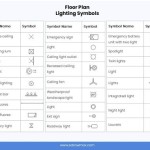House Plants That Are Safe For Cats
Bringing the outdoors in can brighten any home, but cat owners must choose their houseplants carefully. Many common houseplants pose a significant threat to feline companions if ingested. This article explores several house plants that are safe for cats, allowing pet owners to enjoy the aesthetic and air-purifying benefits of greenery without compromising their pet's health.
Spider Plant (*Chlorophytum comosum*)
: The spider plant is a popular choice for its ease of care and air-purifying qualities. Its long, arching leaves produce "spiderettes," or baby spider plants, which dangle from the mother plant, adding a playful element to its appearance. While spider plants are considered non-toxic to cats, they can have a mild hallucinogenic effect, similar to catnip. This typically results in harmless, playful behavior, though excessive consumption might lead to vomiting or diarrhea. Moderation is key, and if a cat shows excessive interest, the plant might be best placed out of reach.Prayer Plant (*Maranta leuconeura*)
: Known for their striking leaf patterns and the way their leaves fold up at night resembling praying hands, prayer plants are a beautiful and safe addition to a cat-friendly home. They thrive in indirect light and humid environments, adding a touch of the tropics to any indoor space. They are non-toxic to cats and offer no known adverse effects if nibbled.Calathea (Various species)
: Like prayer plants, calatheas are part of the Marantaceae family and are similarly safe for cats. They also boast unique leaf patterns and movements, with some varieties raising and lowering their leaves throughout the day in a rhythmic fashion. The rattlesnake plant ( *Calathea lancifolia*) and the zebra plant (*Calathea zebrina*) are two popular examples of cat-safe Calathea varieties.Peperomia (Various species)
: Peperomias come in a wide array of shapes, colors, and textures, making them a versatile choice for indoor gardeners. From the trailing watermelon peperomia (*Peperomia argyreia*) to the upright ripple peperomia (*Peperomia caperata*), these plants are non-toxic to cats and add visual interest to any room. They generally prefer bright, indirect light and well-draining soil.African Violet (*Saintpaulia ionantha*)
: These charming plants are known for their fuzzy leaves and vibrant blooms. They are safe for cats and relatively easy to care for, preferring bright, indirect light and consistent watering. The compact size of African violets makes them ideal for small spaces.Orchids (specifically *Phalaenopsis* orchids)
: Often perceived as delicate, Phalaenopsis orchids, also known as moth orchids, are surprisingly resilient and safe for cats. They prefer bright, indirect light and specific watering practices, but their elegant blooms offer a rewarding display. While other orchid varieties might be mildly toxic, Phalaenopsis orchids are generally considered safe if ingested in small quantities. However, large quantities can cause gastrointestinal upset.Swedish Ivy (*Plectranthus verticillatus*)
: This trailing plant is a resilient and attractive option for hanging baskets or shelves. Its cascading foliage adds a touch of greenery to any space and is non-toxic to cats. Swedish ivy thrives in bright, indirect light and prefers consistently moist soil.Boston Fern (*Nephrolepis exaltata*)
: These classic ferns are known for their lush, feathery fronds. They are safe for cats and effective at humidifying the air. Boston ferns prefer indirect light and consistent moisture, making them a good choice for bathrooms or kitchens.Staghorn Fern (*Platycerium*)
: These unique ferns are epiphytic, meaning they grow on other plants in their natural habitat. They are safe for cats and offer a striking visual element with their antler-like fronds. Staghorn ferns prefer bright, indirect light and require specific watering techniques, often involving soaking the entire root ball.Polka Dot Plant (*Hypoestes phyllostachya*)
: These playful plants are characterized by their brightly speckled leaves. While not as readily available as some other options, polka dot plants are safe for cats and add a touch of whimsy to any indoor space. They prefer bright, indirect light and well-draining soil.While these plants are considered non-toxic to cats, individual reactions can vary. Monitoring a cat's behavior after introducing a new plant is always recommended. If any signs of illness occur, veterinary consultation is advisable. Furthermore, while the plants themselves might be non-toxic, any pesticides or fertilizers used on them could pose a threat. Opting for organic and pet-safe products is crucial for maintaining a healthy environment for both plants and pets.
Finally, it’s important to remember that even non-toxic plants can cause digestive upset if ingested in large quantities. Providing cats with alternative sources of stimulation, such as catnip toys or interactive play, can help discourage excessive plant nibbling. Strategic placement of plants, such as on high shelves or in hanging baskets, can also help limit access and ensure a harmonious coexistence between feline companions and indoor greenery.

Cat Friendly House Plants Hymns And Verses

21 Indoor Plants Safe For Cats And Dogs Paisley House Pet Friendly Cat

20 Non Toxic And Beautiful Houseplants That Are Safe For Cats Pet Friendly Indoor Plants

20 Cat Friendly House Plants Bbc Gardeners World

11 Pet Friendly Houseplants The Woodlands Township Environmental Services

A Guide To The Prettiest Cat Safe Non Toxic House Plants
12 Low Maintenance Houseplants Safe For Cats And Dogs Swift Wellness

Safe For Your Cats Cat House Plants

Pet Friendly Houseplants Safe For Cats And Dogs Article Onthursd

40 Toxic Houseplants For Cats And Dogs With Pictures








